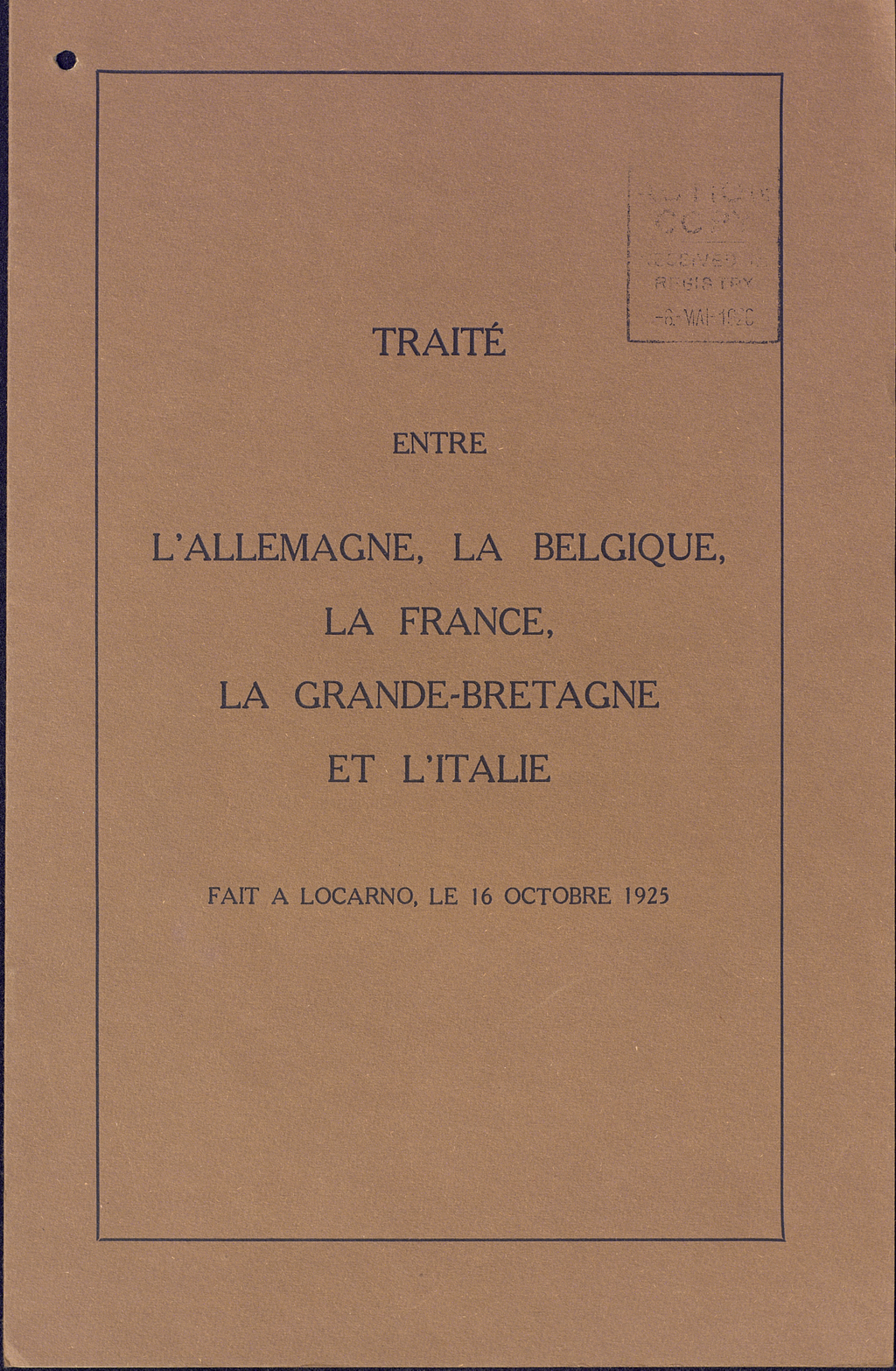In the early 20s the NSDAP had not made a real impression on the general public. German Foreign Minister Gustav Stresemann even managed to bring down the reparations and was strongly trying to improve relations with their neighbors.

The Roaring Twenties even reached Germany. Berlin was considered a party city, similar to Paris. With plenty of bars, dance halls, theaters and cinemas to enjoy the public. It was the time of Fritz Lang and Marlene Dietrich, and no longer to think about the horrors of the past war.[1]
On 1 December 1925 the Locarno Treaties were signed and it was decided that the Rhineland should be demilitarized permanently. Also the Allied forces would retreat from the Rhineland by June 1930.
In all, this Treaty, also called the Spirit of Locarno, was introducing a new hope for international peace.
On 8 September 1926 Germany would join the League of Nations. This event would further stabilize the international standings as well as give Germany an opportunity to seek help overseas for its massive debts as a result of the reparations.
In the elections of 28 May 1928 the NSDAP only got 2.6% of the votes, which translated to 12 seats in the Reichstag.
The Young plan is developed at the Second Reparations Conference in 1929. The committee, with as chairman the plan's name giver Owen D. Young, met first in Paris on 11 Feb 1929 and concluded with a report on 7 June 1929. It basically took the idea of the Dawes plan further and suggested the creation of a settlement agency. The plan reduced the total amount owned by about 17% and scheduled remaining payments to be completed over many years, the last one to be in 1988. Total reparations were fixed at 121 billion Reichsmarks to be paid in 59 annuities.
It also contained a general description of the nature and functions of the international bank, which was setup under the Annexes of the Hague Agreements and included drafts of the bank's charter and its statues, as well as other relevant documents.
In January 1930 the Young plan was ratified at the Hague conference and The Bank of International Settlements (BIS) was formally established. It stated purpose was to ensure timely and continuous German reparation payments to the Allied nations. In thus took over the Reparations Committee role which was created by the Treaty of Versailles. The title of the BIS comes from this original purpose.[2]
Germany did accept the terms, but not everybody was happy with the deal. Politicians like Adolf Hitler and Alfred Hugenberg, but also industrialist Dr. Fritz Thyssen did criticize the plan.
Owen D. Young, who was part of the committee of experts to draft this plan, also served as member of the reparation commission in 1924 which created the Dawes plan.[3]
Germany after the defeat of World War I was quite unstable with various failed attempts to overthrow the existing government, this includes Hitler’s one too. However during the mid Twenties the government managed to stabilize the country and the situation for most Germans was improving. If the situation would have continued as is, Hitler would most likely never have gotten a majority in the Reichstag as his ideology did not appeal to many Germans in the Twenties. To break this status quo something needed to happen, and it did happen!
Next Story: The Great Depression
Read Again: The Road to World War 2
Read Again: The Treaty of Versailles
Read Again: The Early 20s in Germany
Read Again: Beer Hall Putsch